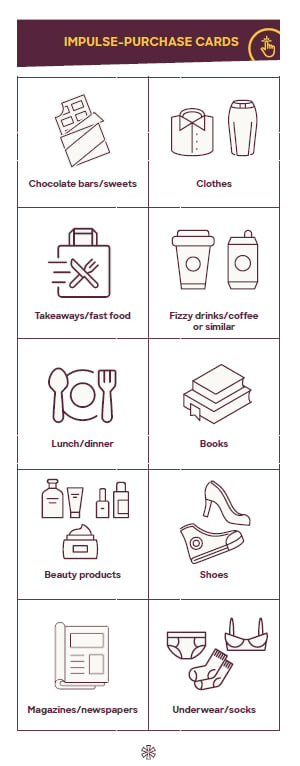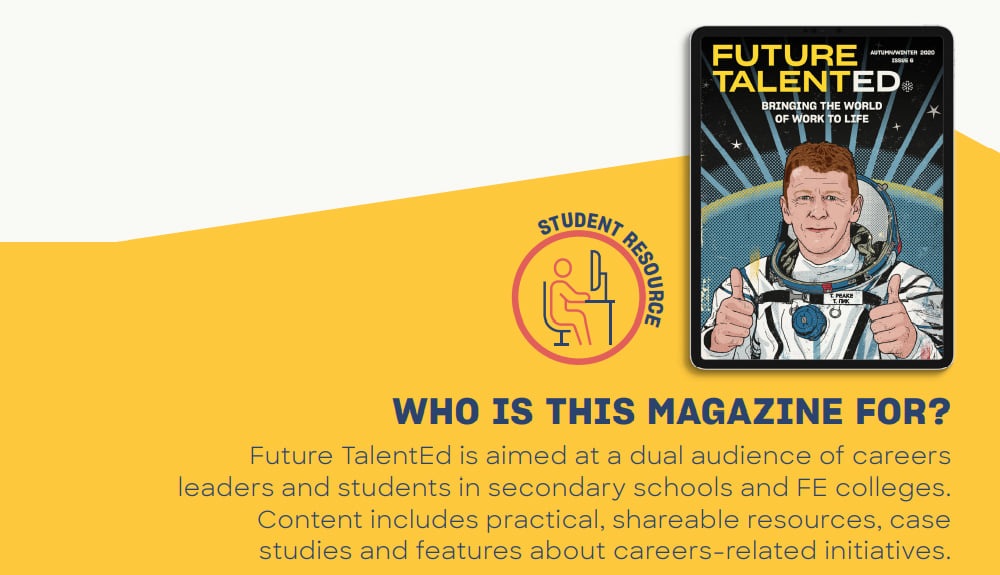This Young Enterprise lesson plan helps students to explore how companies persuade shoppers to make impulse purchases.
Time: 30 minutes
Materials: Impulse purchase cards downloadable from our free digital PDF magazine (optional)
Process: This activity will encourage students to explore the various methods companies use to persuade us to make impulse purchases.
Outcome: On completing this activity a child should be able to say to say the following:
"I understand that people who are selling goods and services, including financial ones, do so to make money and that I have a responsibility to become as well informed as I can before making choices, e.g. by analysing the small print in agreements, or by using comparison websites. I can describe how I can exercise both my rights and responsibilities as a consumer of goods and services."
Better understanding impulse buying: Activity
Explain that during the activity, students will be considering the
act of impulse buying. If we understand impulse buying better,
we can make more informed spending decisions.
Begin by sharing the following statistic from a study carried out by MyJar:
Every month, we make an average of nine impulse buys, equating to 6,512 poorly planned purchases during a lifetime.
Ask the student/s what they think is meant by an ‘impulse buy’?
Responses may include:
- an unplanned purchase
- last-minute purchase
- not thought through
- spur-of-the-moment
- want not need
- a treat
- a feel-good purchase
Discuss whether impulse buying can impact our ability to save.
Ask the student/s to work in small groups (if in class).
Give each group a set of impulse-purchase cards and ask them to rank the impulse buy items from highest to lowest.
The cards are downloadable for free via the Future TalentEd digital magazine (PDF). These cards include the top 10 impulse buys in the UK.

Alternatively, you could display the cards on an electronic whiteboard.
Reveal the correct order, which you can find at the bottom of this activity.
Discuss the results: are they surprised by the top three?
Why do they think chocolate bars and sweets are top of the list?
Chocolates and sweets are inexpensive, easy to justify a small additional spend; they’re easy to grab, especially when queuing for the checkouts, etc. Most impulse buys are relatively inexpensive.
Give the student/s two minutes to talk about why people might make impulse buys.
Encourage them to think about any impulse buys they may have made recently.
Ask students to share their ideas.
Explain that the ‘feel-good factor’ often plays an important role when making an impulse purchase.
Companies use clever marketing to try to persuade us that if we consume or own a particular product, our lives will be improved and we will be happier.
Working in groups (if in class), ask the students to see if they can identify the different marketing methods that companies use to encourage us to make impulse purchases in-store.
EXTENSION
- Ask the student/s to create a simple research questionnaire for their peers about impulse buying.
- They could use the results to raise awareness of impulsepurchasing
behaviours.
STUDENT RESOURCE
Ask the student/s to think about online shopping. Explain that the majority of impulse buys are actually made online.
Ask if they can think of ways that shops might encourage us to make impulse purchases online. Explain that this isn’t an easy task, as the methods companies use to persuade us to buy are not always immediately obvious. Ask them to feed back their ideas.
Companies aim to make consumers’ experiences positive and fun. They use a variety of methods to make consumers feel that the shopping experience is specifically tailored for them. When consumers are enjoying the shopping experience, they’re more likely to make impulse buys.
Finish the activity by asking the student/s to reflect on their learning.
Will they be less likely to make impulse buys now that they understand the techniques companies use to persuade us to buy?
You could provide these bullet points as guidance:
- How does the shop make the items stand out?
- Where does the shop place the items?
- What messages does the shop use to make the customer decide to buy the item?
Ask the student/s to feed back their ideas.
Methods include:
- Brightly coloured and well-lit shelves
- Leaving small, inexpensive items such as confectionary near the checkouts
- Using eye-catching signs to advertise sales items
- Making sure the items are easy to grab and add to your basket
- Persuasive messaging, playing on ‘urgency’ (e.g. one day only, limited-time offer) or playing on ‘value’ (best-value item, buy two for £1)
- Companies aim to make their websites easy to navigate and attractive.
- Consumers can personalise their experience, selecting favourites and opting in for product recommendations; this way it’s easier and quicker to find specific items.
- Upselling or additional product suggestions – once you’ve added something to your basket and you’re checking out, a company may suggest other items, usually small ones, that you could buy that would complement your main purchase; e.g. when buying trainers, the shop may suggest buying trainer cleaner.
- There may be a timer when you buy additional items – making you feel that you only have a limited chance to purchase that item/suggesting the item is on offer specifically to you.
- Companies may offer free postage and packaging if you spend over a certain amount of money. Small impulse buys can help you reach this required spend.
Answers: 1) Chocolate bars/sweets // 2) Clothes // 3) Takeaways/fast food // 4) Fizzy drinks/coffee or similar // 5) Lunch/dinner 6) Books // 7) Beauty products // 8) Shoes // 9) Magazines/newspapers // 10) Underwear/socks
These insights were brought to you by Future TalentEd magazine.

This piece was first featured in our Autumn/Winter 2020 issue of Future TalentEd magazine for careers leaders, parents and students.


















